I am trying to write unit tests for authentication logic implemented using Azure AD client credentials flow using MOQ.
The first test case is to check that if the "Audience" is valid. I am trying to mock claim to set up the "aud" or "appId" claims using ClaimTypes but not able to find anything like ClaimTypes.Aud
var identity = new ClaimsIdentity(new Claim[] {
new Claim(ClaimTypes.Name, "Sahil")
});
var mockPrincipal = new Mock<ClaimsPrincipal>(identity);
mockPrincipal.Setup(x => x.Identity).Returns(identity);
mockPrincipal.Setup(x => x.IsInRole(It.IsAny<string>())).Returns(true);
How can I set up the "aud" and "appId" claims in C# OR Just setup mockPrincipal so that when it tries to check if "aud" is valid it returs false.
I am trying to write unit tests for the below code.
public void Authenticate(JwtBearerOptions options)
{
_configuration.Bind("AzureAD", options);
options.TokenValidationParameters.ValidateAudience = true;
options.TokenValidationParameters.ValidateIssuerSigningKey = true;
options.TokenValidationParameters.ValidateIssuer = true;
options.Events ??= new JwtBearerEvents();
var existingHandlers = options.Events.OnTokenValidated;
options.Events.OnTokenValidated = async context =>
{
string appId = GetAppIdFromToken(context);
bool isAllowed = await CheckAppIdIsAllowedAsync(context, appId);
if (isAllowed)
{
_logger.LogInformation($"[{nameof(Authenticate)}] AppId in allow list");
}
else
{
_logger.LogError($"[{nameof(Authenticate)}] AppId {appId} not in allowed list");
}
await Task.CompletedTask.ConfigureAwait(false);
};
options.Events.OnTokenValidated += existingHandlers;
}
private string GetAppIdFromToken(TokenValidatedContext context)
{
string appId = context.Principal.Claims.FirstOrDefault(x => x.Type == "appid" || x.Type == "azp")?.Value;
return appId;
}
private async Task<bool> CheckAppIdIsAllowedAsync(TokenValidatedContext context, string appId)
{
IEnumerable<string> AllowedApps = _configuration.GetSection("AllowedAppPrincipals").Get<string[]>();
var FoundAppId = AllowedApps.FirstOrDefault(a => a == appId);
if (FoundAppId == null)
{
context.Response.StatusCode = (int)HttpStatusCode.Forbidden;
context.Response.ContentType = "application/json";
const string message = "{\"error\" : \"Unacceptable app principal\"}";
byte[] arr = Encoding.ASCII.GetBytes(message);
await context.Response.BodyWriter.WriteAsync(arr);
context.Fail(message);
return false;
}
return true;
}
How to mock aud and appId claims with Moq?



